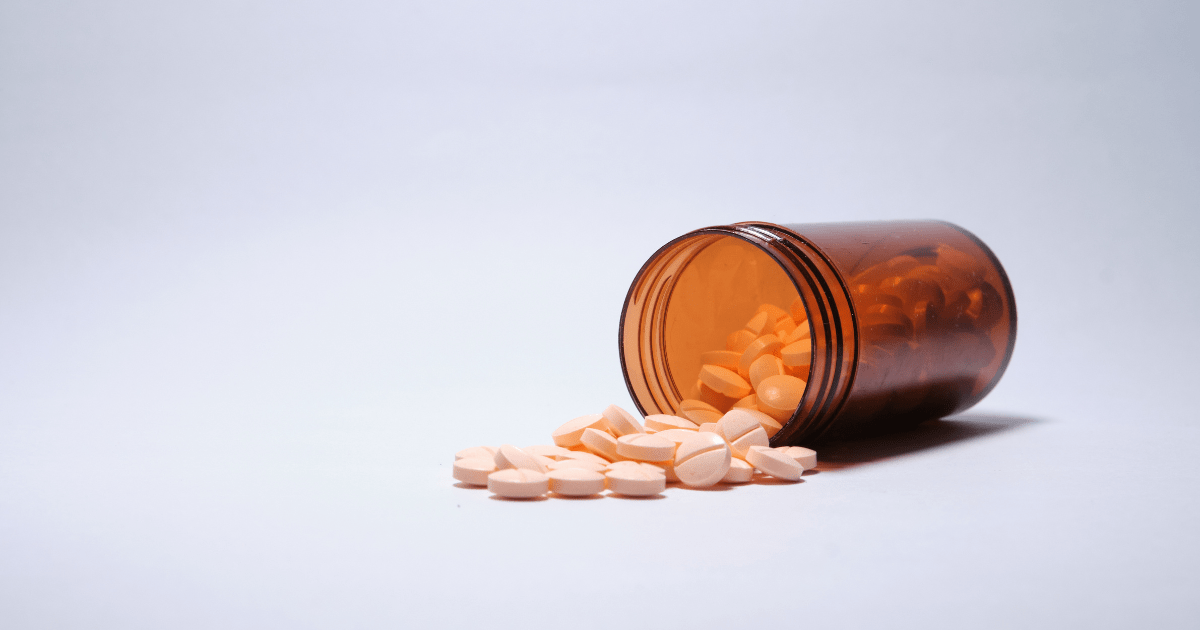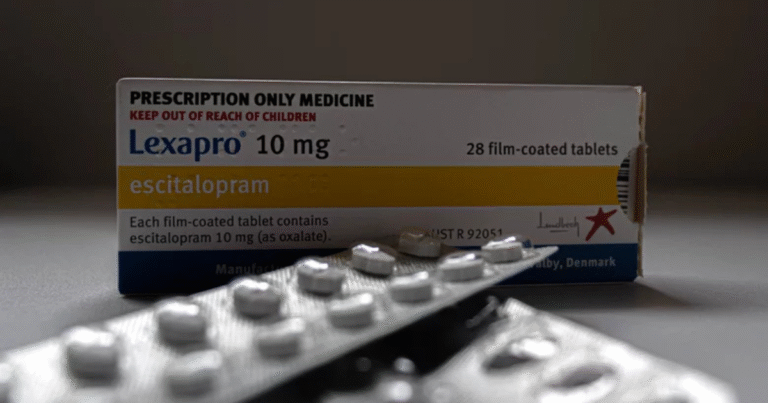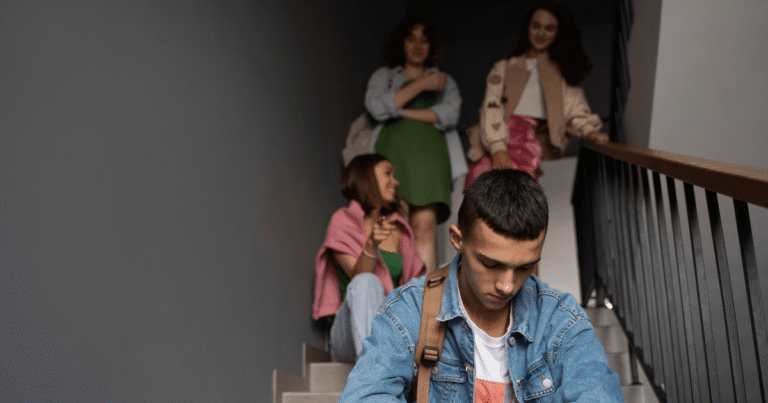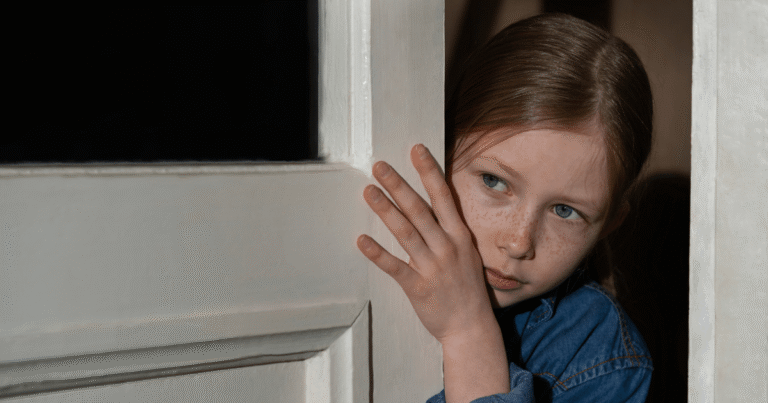Social Anxiety and Adderall: Why This “Solution” Creates More Problems Than It Solves
Searching for quick relief from social anxiety? The combination of social anxiety and Adderall might seem appealing, but this dangerous path often leads to worsened anxiety, addiction, and serious health risks.
When social anxiety makes every interaction feel like a performance you’re destined to fail, it’s natural to seek any solution that promises relief. Unfortunately, the growing trend of using social anxiety and Adderall together represents one of the most dangerous forms of self-medication, with consequences that can devastate both mental and physical health.
This comprehensive guide examines why people turn to stimulants for social anxiety, the serious risks involved, and the evidence-based alternatives that actually work for long-term recovery.
The Dangerous Appeal: Why People Consider Social Anxiety and Adderall
The Desperation Behind Self-Medication
Why the combination seems attractive:
- Social anxiety can feel unbearable and treatment seems too slow
- Stories circulate about stimulants providing “instant confidence”
- Easy access through friends, family, or online sources
- Misconception that prescription drugs are automatically safe
- Desire to avoid the stigma of mental health treatment
The social anxiety experience that drives risky choices:
- Overwhelming fear of judgment that prevents normal functioning
- Physical symptoms (sweating, trembling, blushing) that feel uncontrollable
- Missed opportunities in career, relationships, and personal growth
- Isolation and loneliness that compounds the problem
- Desperate need for relief when traditional treatments feel inaccessible
How Adderall Initially Appears to “Help”
The temporary effects that create false hope:
Increased dopamine and confidence:
- Short-term euphoria that masks social fears
- Reduced inhibitions that make conversation feel easier
- Artificial sense of charisma and social competence
- Temporary relief from self-doubt and overthinking
Enhanced focus and energy:
- Ability to concentrate on conversations rather than internal anxiety
- Increased energy that combats anxiety-related fatigue
- Heightened alertness that can improve social performance
- Reduced awareness of physical anxiety symptoms
Reduced social filter:
- Increased talkativeness that can feel like improved social skills
- Decreased worry about saying the “wrong” thing
- Enhanced sense of connection with others
- Temporary freedom from social perfectionism
The Scientific Reality: Why Social Anxiety and Adderall Don’t Mix
Understanding What Adderall Actually Does
Adderall’s mechanism of action:
- Increases dopamine and norepinephrine in the brain
- Activates the sympathetic nervous system (fight-or-flight response)
- Designed to treat ADHD and narcolepsy, not anxiety disorders
- Works by stimulating brain activity, not calming it
Why this creates problems for anxiety:
- Stimulants naturally increase anxiety symptoms
- Fight-or-flight activation worsens social anxiety triggers
- Creates physiological arousal that mimics panic attacks
- Interferes with the brain’s natural anxiety regulation systems
The Neurochemical Conflict
How social anxiety and Adderall work against each other:
Social anxiety involves:
- Overactive amygdala (fear center of the brain)
- Dysregulated stress response system
- Heightened sensitivity to social threats
- Need for calming, not stimulating, interventions
Adderall causes:
- Increased norepinephrine (stress hormone)
- Heightened alertness and vigilance
- Amplified fight-or-flight response
- Overstimulation of already anxious brain circuits
The result: A neurochemical tug-of-war that typically makes anxiety worse over time.
The Dangerous Consequences: Why Social Anxiety and Adderall Is a Recipe for Disaster
Immediate Physical Risks
Cardiovascular Dangers
Heart-related complications:
- Rapid heart rate (tachycardia) that can trigger panic attacks
- Elevated blood pressure that compounds anxiety symptoms
- Palpitations that increase fear of having a heart attack
- Chest pain that worsens health anxiety
- Risk of arrhythmias, especially with higher doses
Neurological Effects
Brain and nervous system impacts:
- Increased seizure risk, particularly in vulnerable individuals
- Overstimulation leading to agitation and restlessness
- Heightened sensitivity to stress and anxiety triggers
- Disrupted sleep patterns that worsen anxiety over time
- Potential for stimulant-induced psychosis with heavy use
Physical Symptoms That Worsen Social Anxiety
Visible symptoms that increase social fear:
- Excessive sweating that’s noticeable to others
- Trembling hands or body that can’t be hidden
- Dilated pupils that others may notice
- Rapid, shallow breathing that affects speech
- Jaw clenching or teeth grinding
- Restlessness that makes sitting still difficult
Psychological and Behavioral Consequences
The Rebound Effect
What happens when Adderall wears off:
- Severe anxiety crash that’s worse than original symptoms
- Depression and irritability that strain relationships
- Extreme fatigue that interferes with daily functioning
- Increased social anxiety as brain chemistry rebounds
- Desperate need for more medication to avoid the crash
Addiction and Dependence Patterns
How dependency develops with social anxiety and Adderall:
Stage 1: Initial relief
- User experiences temporary confidence boost
- Social situations feel more manageable
- False belief that medication is “working”
Stage 2: Tolerance development
- Original dose becomes less effective
- User increases dose or frequency
- Physical dependence begins to develop
Stage 3: Psychological dependence
- User believes they cannot socialize without Adderall
- Social anxiety worsens when not using the drug
- Life becomes organized around obtaining and using stimulants
Stage 4: Addiction
- Continued use despite negative consequences
- Unable to function socially or professionally without medication
- Health, relationships, and responsibilities suffer
Worsening of Original Social Anxiety
How stimulant use backfires:
- Increased paranoia: Stimulants can create suspicious thoughts about others’ intentions
- Heightened self-consciousness: Awareness of drug effects makes users feel more “fake”
- Social skill deterioration: Authentic social abilities atrophy without practice
- Confidence dependence: Users lose faith in their natural social abilities
- Crash-related social withdrawal: Users avoid social situations during comedown periods
Long-Term Health Consequences
Physical Health Deterioration
Chronic effects of stimulant misuse:
- Cardiovascular damage from chronic overstimulation
- Sleep disorders that compound anxiety and depression
- Nutritional deficiencies from appetite suppression
- Immune system suppression from chronic stress
- Potential for stroke or heart attack with long-term use
Mental Health Complications
Psychiatric consequences:
- Treatment-resistant anxiety that doesn’t respond to proper medications
- Depression from chronic dopamine depletion
- Increased risk of panic disorder and agoraphobia
- Potential development of stimulant-induced psychosis
- Cognitive impairment from long-term stimulant use
Real-World Scenarios: How Social Anxiety and Adderall Ruins Lives
Case Study 1: The College Student
Initial situation: 20-year-old college student with social anxiety starts taking roommate’s Adderall before parties and social events.
Progression:
- Feels confident and outgoing at first social events
- Begins taking Adderall before classes, dates, and work
- Develops tolerance and starts taking higher doses
- Experiences severe anxiety crashes after social events
- Begins using daily to avoid withdrawal symptoms
Consequences:
- Academic performance declines during crash periods
- Relationships suffer due to mood swings and inconsistent behavior
- Develops panic attacks when Adderall is unavailable
- Health problems from chronic stimulant use
- Legal consequences from obtaining drugs illegally
Case Study 2: The Young Professional
Initial situation: 25-year-old with social anxiety uses Adderall before networking events and presentations.
Progression:
- Initially performs well at work presentations and networking
- Begins using before all social work functions
- Colleagues notice erratic behavior and mood changes
- Develops dependence on stimulants for any social interaction
- Performance declines when not using Adderall
Consequences:
- Career advancement limited by inconsistent performance
- Develops anxiety disorders that require professional treatment
- Relationship problems due to mood instability
- Financial consequences from obtaining drugs illegally
- Health complications requiring medical intervention
Case Study 3: The Social Media Influence
Initial situation: Person sees social media posts about using Adderall for confidence and decides to try it.
Progression:
- Tries stimulants based on online recommendations
- Experiences initial improvement in social situations
- Shares positive experiences online, influencing others
- Develops tolerance and addiction over time
- Mental and physical health deteriorate
Consequences:
- Spreads dangerous misinformation about stimulant “benefits”
- Develops severe anxiety and depression
- Requires intensive treatment for both anxiety and addiction
- Faces legal consequences for drug possession
- Experiences long-term health problems
The Science of Why This Doesn’t Work: Research and Evidence
Clinical Studies on Stimulants and Anxiety
Research findings:
- Multiple studies show stimulants increase anxiety symptoms in most people
- Stimulant use is associated with higher rates of anxiety disorders, not lower
- People with pre-existing anxiety are at highest risk for negative effects
- Treatment outcomes are worse for anxiety disorders when stimulants are involved
Neuroimaging research:
- Brain scans show increased amygdala activation with stimulant use
- Stress response systems become hyperactive with chronic stimulant exposure
- Natural anxiety regulation mechanisms become impaired
- Recovery of normal brain function can take months after stopping stimulants
Addiction Medicine Perspective
Why social anxiety creates higher addiction risk:
- Psychological vulnerability from desperate need for relief
- Social isolation reduces support systems and accountability
- Shame about both anxiety and drug use prevents seeking help
- Reinforcement cycle between social success and drug use
Addiction progression patterns:
- Faster development of tolerance in people using stimulants for emotional reasons
- Higher risk of escalation to dangerous doses
- More difficulty achieving sustained recovery
- Greater likelihood of relapse during social stress
Evidence-Based Alternatives That Actually Work
Cognitive Behavioral Therapy (CBT): The Gold Standard
Why CBT is superior to stimulant use:
- Addresses root causes rather than masking symptoms
- Builds lasting skills that don’t require medication
- No risk of addiction or dangerous side effects
- Proven effective in numerous clinical trials
What CBT includes for social anxiety:
- Cognitive restructuring: Learning to challenge catastrophic thoughts about social situations
- Exposure therapy: Gradually facing feared social situations with professional support
- Social skills training: Building genuine confidence through skill development
- Relapse prevention: Maintaining progress and handling setbacks
Expected timeline: Most people see significant improvement within 12-16 weeks of consistent CBT.
FDA-Approved Medications for Social Anxiety
SSRIs (Selective Serotonin Reuptake Inhibitors)
Paroxetine (Paxil): FDA-approved specifically for social anxiety disorder
- Works by balancing brain chemistry naturally
- Takes 4-6 weeks to show full effects
- Can be used long-term without addiction risk
- Helps with both anxiety and depression symptoms
Sertraline (Zoloft): Effective for social anxiety with good tolerability
- Lower side effect profile than some other SSRIs
- Good option for people with co-occurring depression
- Can be combined with therapy for optimal results
SNRIs (Serotonin-Norepinephrine Reuptake Inhibitors)
Venlafaxine (Effexor XR): FDA-approved for social anxiety
- Effective for severe social anxiety symptoms
- Also helps with generalized anxiety
- Good option when SSRIs aren’t effective
Other Medications
Beta-blockers (like propranolol): For performance anxiety
- Reduces physical symptoms like trembling and rapid heartbeat
- Safe for occasional use before specific events
- No addiction potential
- Doesn’t address underlying anxiety but helps with symptoms
Group Therapy and Support Groups
Benefits of group treatment for social anxiety:
- Built-in exposure to social interaction
- Peer support from others who understand the struggle
- Opportunity to practice new skills in safe environment
- Reduces isolation and shame about anxiety
Types of group support:
- Therapist-led social anxiety groups
- Toastmasters for public speaking anxiety
- Social anxiety support groups
- Online communities and forums
Lifestyle and Complementary Approaches
Exercise and Physical Activity
Why exercise helps social anxiety:
- Reduces overall anxiety levels naturally
- Improves mood through endorphin release
- Builds confidence through physical accomplishment
- Provides healthy outlet for stress and tension
Best types of exercise for social anxiety:
- Group fitness classes for gradual social exposure
- Team sports for social skill building
- Individual activities like running or yoga for stress relief
- Martial arts for confidence building
Mindfulness and Meditation
How mindfulness helps social anxiety:
- Teaches present-moment awareness instead of future-focused worry
- Reduces rumination about past social interactions
- Builds tolerance for uncomfortable emotions
- Improves emotional regulation skills
Practical applications:
- Daily meditation practice for overall anxiety reduction
- Mindful breathing during social situations
- Body awareness techniques for managing physical symptoms
- Loving-kindness meditation for self-compassion
Getting Help: Resources and Next Steps
If You’re Currently Using Stimulants for Social Anxiety
Immediate steps:
- Don’t stop abruptly: Stimulant withdrawal can be dangerous
- Consult a healthcare provider: Be honest about your use
- Seek addiction treatment if needed: Many resources are available
- Address underlying social anxiety: Get proper treatment for the root cause
Treatment resources:
- Addiction treatment centers with dual-diagnosis expertise
- Mental health professionals specializing in anxiety disorders
- Support groups for both addiction and social anxiety
- Medical professionals who can safely manage withdrawal
Finding Effective Social Anxiety Treatment
Choosing a Mental Health Professional
Look for providers who:
- Specialize in anxiety disorders
- Have experience with CBT and exposure therapy
- Understand the connection between substance use and anxiety
- Can provide comprehensive treatment for both issues
Questions to ask potential therapists:
- What experience do you have treating social anxiety?
- Do you use exposure therapy in your practice?
- How do you handle clients who have used substances for anxiety?
- What’s your approach to treating co-occurring conditions?
Treatment Programs and Resources
Intensive options:
- Partial hospitalization programs for severe anxiety
- Intensive outpatient programs combining therapy and psychiatry
- Residential treatment for severe addiction and mental health issues
Ongoing support:
- Individual therapy with anxiety specialists
- Group therapy programs for social anxiety
- Psychiatric care for medication management
- Peer support groups and online communities
Prevention: Protecting Yourself and Others
Recognizing Warning Signs
Risk factors for stimulant misuse:
- Severe social anxiety that interferes with daily functioning
- Pressure to perform socially or professionally
- Access to stimulant medications through friends, family, or illegal sources
- Previous substance use for anxiety management
- Lack of awareness about proper anxiety treatment
Early warning signs:
- Using stimulants before social events “just this once”
- Feeling unable to socialize without chemical assistance
- Increasing tolerance requiring higher doses
- Experiencing severe anxiety crashes after stimulant use
- Prioritizing drug access over other responsibilities
Protecting Others
If someone you know is using stimulants for social anxiety:
- Express concern without judgment
- Provide information about real treatment options
- Offer to help them find professional resources
- Don’t enable their use by providing medications
- Know the signs of overdose and when to call for help
Emergency signs requiring immediate medical attention:
- Chest pain or rapid heartbeat
- Severe agitation or paranoia
- Difficulty breathing
- High fever or excessive sweating
- Signs of psychosis (hallucinations, delusions)
The Road to Real Recovery
What Genuine Recovery Looks Like
Short-term goals (1-3 months):
- Learning to manage social anxiety without substances
- Developing basic coping skills for social situations
- Building support systems and professional relationships
- Addressing any physical health consequences of stimulant use
Long-term recovery (6+ months):
- Genuine confidence in social situations without chemical assistance
- Healthy relationships based on authentic connections
- Career or academic success based on real skills and abilities
- Overall improved mental and physical health
Building Lasting Social Confidence
The real work of recovery involves:
- Learning to tolerate anxiety without immediately trying to eliminate it
- Building genuine social skills through practice and feedback
- Developing self-compassion for social mistakes and awkwardness
- Creating a life worth living that includes meaningful social connections
Keys to sustainable improvement:
- Patience with the gradual process of building real confidence
- Commitment to evidence-based treatment approaches
- Building support systems that understand both anxiety and recovery
- Focusing on progress rather than perfection
The Bottom Line: Why Social Anxiety and Adderall Never Works
The fundamental problem with using social anxiety and Adderall together is that it treats symptoms while making the underlying condition worse. Stimulants provide temporary relief at the cost of:
- Worsened anxiety over time
- Risk of serious addiction
- Dangerous physical and mental health consequences
- Prevention of real skill development
- Interference with effective treatment
The solution lies in evidence-based treatments that address the root causes of social anxiety while building genuine, lasting confidence. These treatments may take longer to show effects, but they provide sustainable improvement without the devastating risks of stimulant misuse.
Remember:
- Social anxiety is highly treatable with proper care
- You don’t need drugs to develop genuine social confidence
- Help is available from qualified professionals who understand both anxiety and addiction
- Recovery is possible, no matter how desperate your situation feels right now
Your social confidence and mental health are worth the investment in real treatment. The temporary relief offered by stimulants isn’t worth the long-term consequences. Choose the path that leads to genuine healing and lasting freedom from both social anxiety and substance dependence.
If you’re struggling with social anxiety and Adderall use, reach out for help today. You deserve treatment that actually works.







